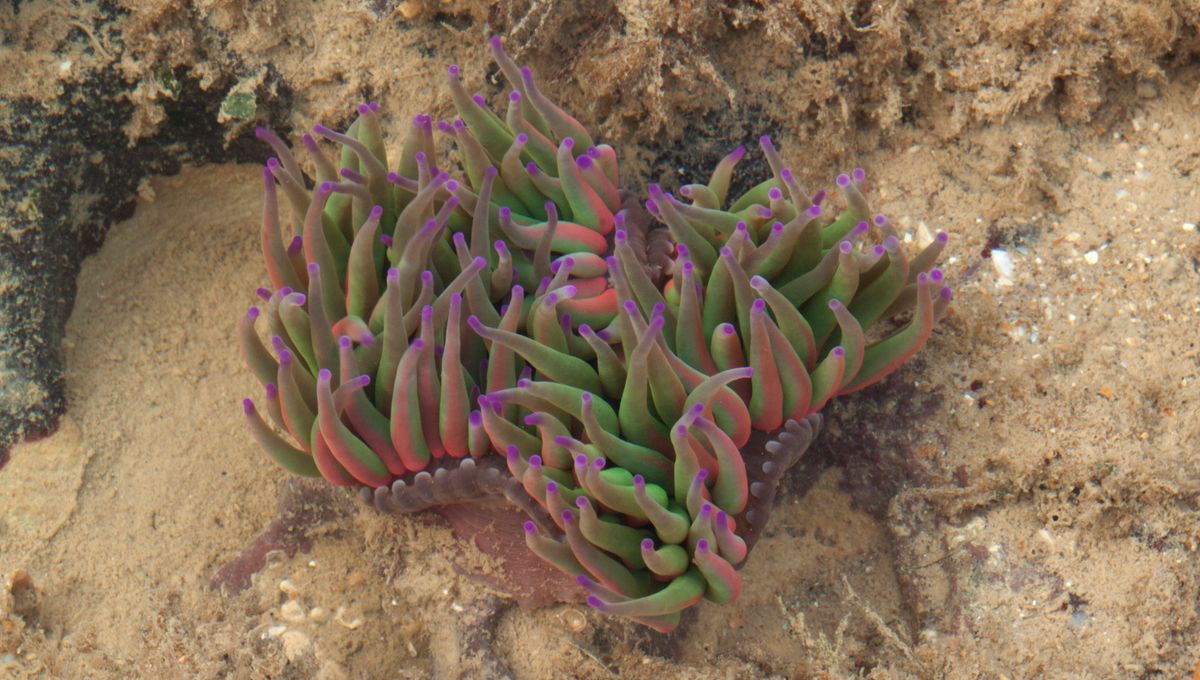
Anemones are the first animals known to follow the Sun, wiggling their tentacles east at dawn and west at dusk in what is known as heliotropism – a phenomenon that’s previously only been seen in plants.
In a new preprint paper, yet to be peer-reviewed, snakelocks sea anemones (Anemonia viridis) have been observed tracking the Sun’s movement across the sky, making them the first “heliotropic” animals.
Plants are well-versed in echoing the Sun’s movements – able to re-orient their shoot growth toward sunlight in what is known as phototropism. Similar behavior has also been seen in fungi and animals in the phylum Cnidaria. However, this is a long-term response, and plants can also exhibit a more dynamic form of movement known as heliotropism or solar tracking, whereby their leaves or flowers trace the position of the Sun throughout the day.
Now, A. viridis has become the first animal known to do this. The cnidarians are found in the eastern Atlantic Ocean and the Mediterranean Sea and host symbiotic algae in their tissues. This means that, like plants, they rely on photosynthesis as an energy source and, as such, are also slaves to sunlight.
To investigate whether the anemones were in fact heliotropic, a team of researchers filmed them in their natural, rock pool habitat over the course of a day. The invertebrates “revealed plant-like heliotropism by pointing their tentacles towards the Sun, facing east at dawn and west at dusk as they track the Sun’s relative position,” the team writes in their paper. When they blocked the sunlight, this behavior ceased.
They also replicated these observations in the lab, slowly moving a light source around a tank, and witnessed the anemones moving in the exact same way.
When they experimented with different wavelengths of light, the team found that, as with sun-tracking plants, A. viridis exhibited a heliotropic response under blue and violet light. In one experiment, they bleached the anemones to get rid of their photosynthetic friends, and in another they chemically inhibited photosynthesis, finding in both that heliotropism was absent.
“Together, our experiments show that photosynthesis drives the heliotropic behaviour in A. viridis,” the researchers write.
They also note that by aligning their tentacles with the light in this way, the anemones reduce the surface area that is exposed to solar irradiation by around 40 percent, which they suggest could mean it is an adaptation to minimize excess light uptake and therefore prevent damage.
“A. viridis has likely evolved plant-like heliotropism as an effective way to modulate exposure to solar irradiation for photosynthesis,” they write. “The study exemplifies how photosynthetic organisms such as plants and photosymbiotic sea anemones, display similar behavior in response to similar environmental pressures.”
So, it turns out sea anemones are surprisingly plant-like both in terms of their tracking of the Sun and their genetics. They also happen to make excellent hats – and boxing gloves – if you’re a crab, at least.
The paper is available at bioRxiv.
Source Link: Anemones Are The First Known "Heliotropic" Animal, Tracking The Sun Like Plants